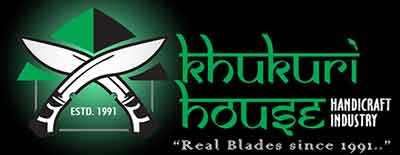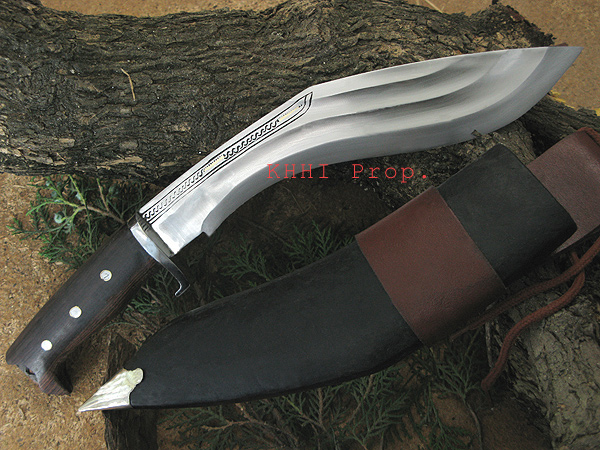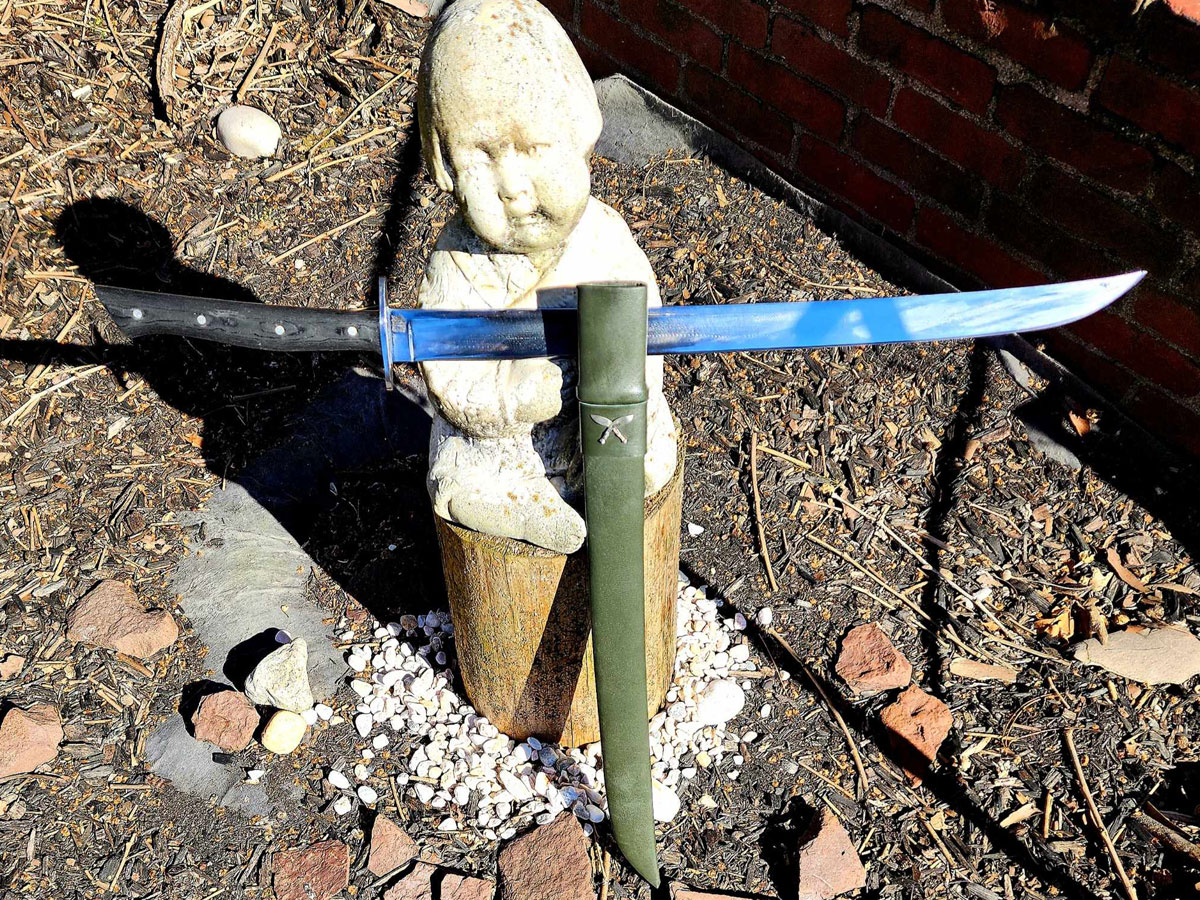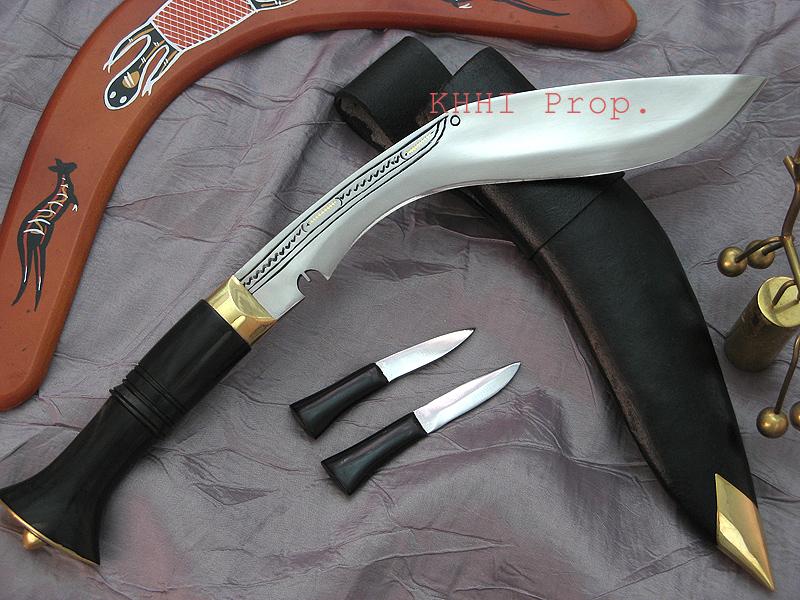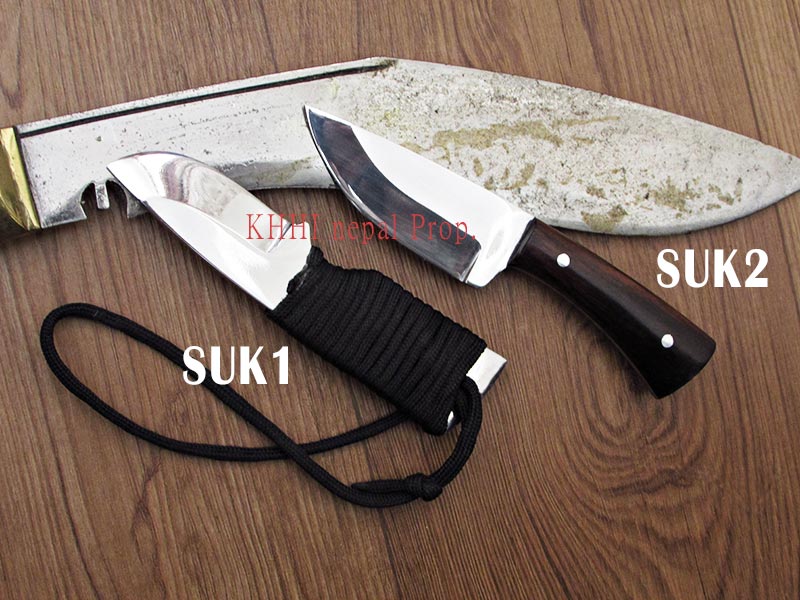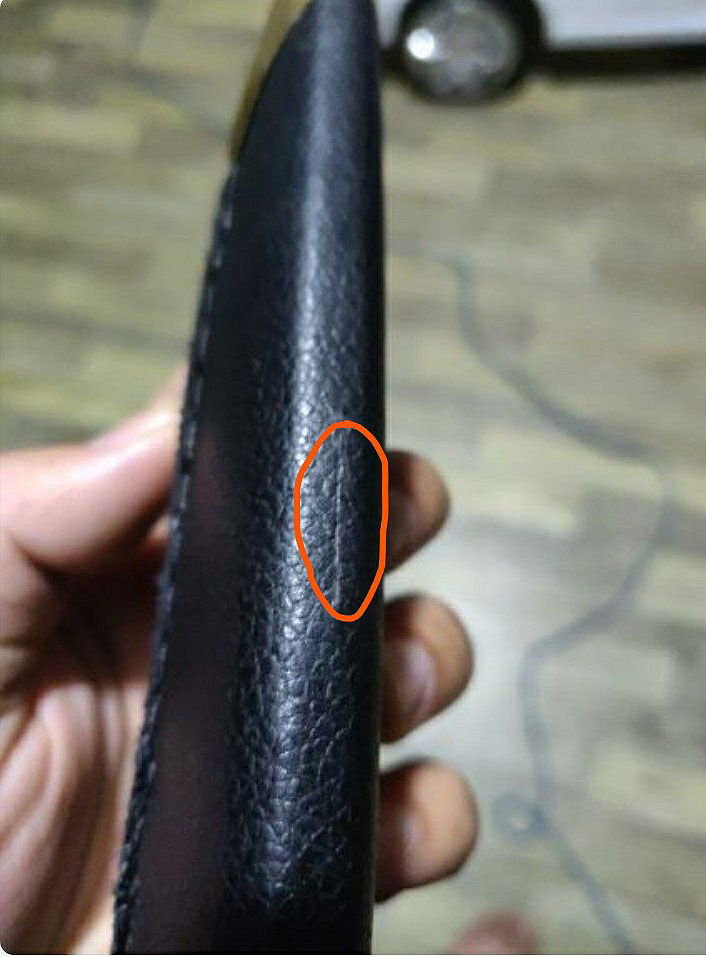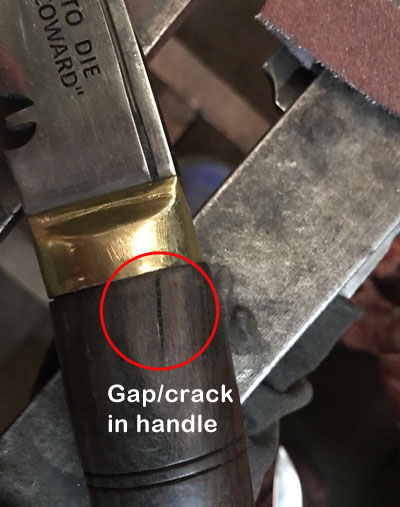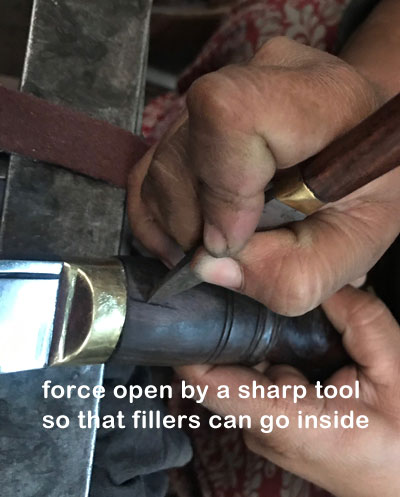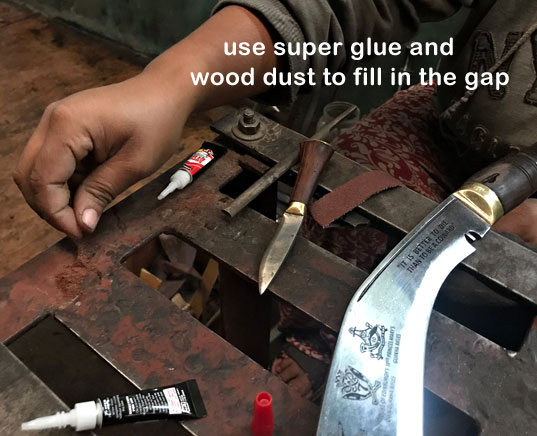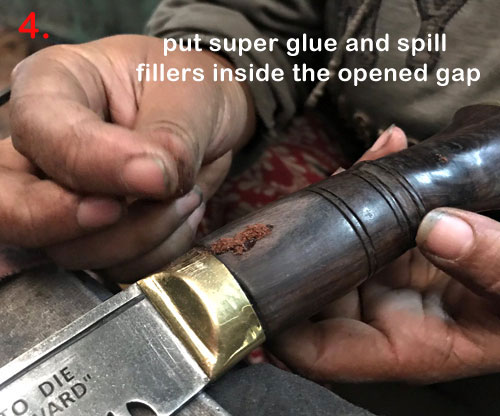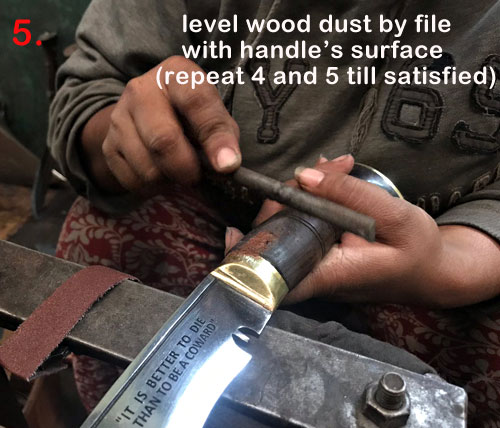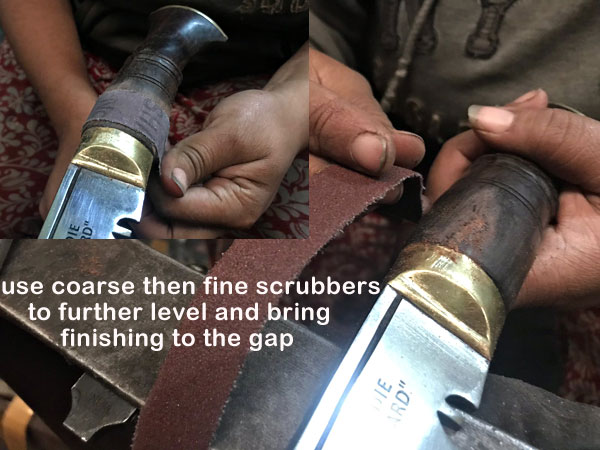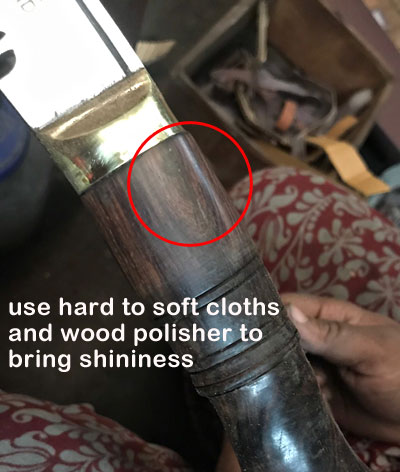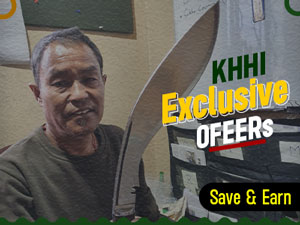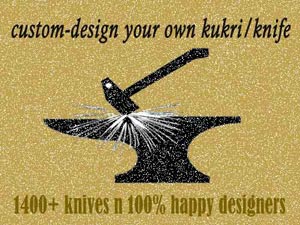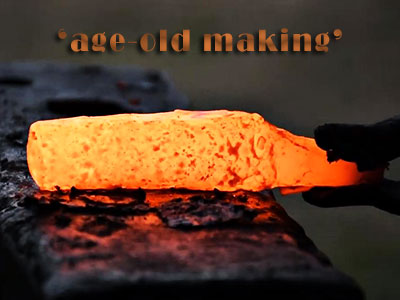Maintain Ur Kukri
Khukuri of the Month
Blade Size (in): 2.5 in (SUKx 1)
Weight (gm): 100
USD 17.99
Kukri Maintenance
- Home
- Kukri Maintenance
Useful domestic khukuri maintenance tips... Know the basic ways to look after a knife. (do it yourself)
All the information you need to know on keeping your kukri live and kicking (usable), fit and fine..
Here we have all your question answered and solution to every problem your are facing, related to the khukuri..
- How to look after the blades properly? General maintenance tips. DONT's/CAUTION !!
- How to REMOVE RUST from kukri blade?
- How to take care of VERY TIGHT or very LOOSE sheath issue? (includes KYDEX sheath)
- How to sharpen a khukuri/kukri/knife? What are KARDA and CHAKMAK (accompanying knives) for?
- How to SHARPEN a kukri BY CHAKMAK?
- How to SHARPEN kukri BY a FILE?
- LONG TERM STORAGE: the Plastic method.
- How to FIX a DAMAGE TIP? How to mend a BENT/BROKEN TIP?
- How to FILL/cure the gap/CRACKS in HANDLE?
- Trouble Shooter ( issue >> solution )
- How to handle (draw /UNSHEATHE) a kukri?
How to maintain your Kukri? General maintenance guide.
- Apply machine/gun or any motor oil on the blade at least once a month or/and every time after use. Make sure not to leave any fingerprints on the blade
- Incase rust develops, first clean the blade with some petrol/gasoline then rub the rust off with fine sandpaper; wipe it off by a clean cloth and apply oil. A buff machine may be used to re-shine the rust infected area
- Scrub the carved (Dragon) blade by a hard brush (tooth brush) soaked in petrol and wipe it with a clean cloth before displaying
- Both sides (edge) of the blunt chakmak can sharpen the blade. However, a sharpening stone is recommended for better and faster result
- Use shoe polish for leather sheath, furniture wax for wood, Brasso (brass polish) for brass fittings and Silvo (silver polish) for silver once in a while to always keep your khukuri fit and fine
- While on display, make sure to often clean the dirt particles, insect waste etc picked up by the blade's surface with a soft dry cloth and always keep away from water and moist
- Before khukuri is put out of action for a long period of time; oil the blade heavily, wrap it in a plastic or polythene bag (make sure there are no air patches) and keep it out of the scabbard. Same for the two small knives
- Always store/keep khukuri in a dry normal temperature room
KNOW the BASICS .. Caution !! (DONT's)
- Care should be taken not to expose the scabbard into the sun for a longer period of time as heating may help it to shrink a bit, and hence making the blade difficult to draw-in draw-out
- Using the blade on metallic surface and stone etc. should be avoided
- Keep the blade away from water, moist and fingerprints
- Khukuri is not a throwing knife so must never be thrown
- It is also not made for hammering
- Overworking on the bevel or sharp edge area while maintaining or repairing thru machines should be avoided as heat generated from it can spoil/lessen the hardness (temper) of the blade
- Guidance and supervision is essential before use and must always be kept out of reach of children
- Always maintain your khukuri in a timely manner so that its life can be prolonged
- Using khukuri in extreme and watery conditions should be avoided
How to remove rust from kukri knife? (Do it yourself )
If you are wondering on how to remove rust from your kukri /khukuri/knife/ or the rust on your blade. Here is a very easy way of removing rust from your knives/ blades (home remedy). You can try this method easily at home, and do it on your own.
How to unsheathe your Kukri? (Off belt position; typical)
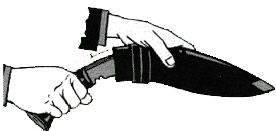 Do not encircle the scabbard with your fingers while drawing out the blade. This may cause injury as the two wooden frames used to make the scabbard may leave a small elongated gap that only gets wrapped/covered by leather later on. Therefore hold the upper edge of the scabbard firmly with your palm and fingers but making sure no finger is placed on the front edge then draw the blade out slowly. It works better (easier) if the blade’s back edge (spine) slightly pushes against the inner back edge of the scabbard while sliding in and out. Always make sure to keep the khukuri away from your body, scabbard holding-hand well stretch out, khukuri’s sharp edge facing sideways from your body, and slightly downward/angular hands position for easy draw-in draw-out.
Do not encircle the scabbard with your fingers while drawing out the blade. This may cause injury as the two wooden frames used to make the scabbard may leave a small elongated gap that only gets wrapped/covered by leather later on. Therefore hold the upper edge of the scabbard firmly with your palm and fingers but making sure no finger is placed on the front edge then draw the blade out slowly. It works better (easier) if the blade’s back edge (spine) slightly pushes against the inner back edge of the scabbard while sliding in and out. Always make sure to keep the khukuri away from your body, scabbard holding-hand well stretch out, khukuri’s sharp edge facing sideways from your body, and slightly downward/angular hands position for easy draw-in draw-out.
How to properly Draw a kukri knife? Sheath (draw-in) | UnSheath (draw-out) >> Watch the video
What to do if the scabbard is Too Tight or Too Loose?
The buffalo leather used for the khukuri scabbard is sensitive to some extent to the outer weather and conditions. It can shrink a bit in hot temperature where as expand a bit in cold temperature thus treatment is needed as necessary.
“Too Tight”; because of too hot surrounding temperature, leather can shrink giving extra pressure to the inner wooden frame of the scabbard resulting into narrowing the blade’s room and thus making drawing in and out difficult. In a case like this, oil the blade sufficiently and then completely tuck in the blade forcefully if needed. Hit the front edge of the scabbard close to the throat and the back edge several times with one hand while the other holds the khukuri handle firmly. Then draw the blade in and out a few times and repeat the hitting action. Lastly tuck in the khukuri completely and firmly push the blade forward against the front edge of the scabbard and then store in a cool dry place for few days.
“Too Loose”; very cold temperature can extend the leather creating some free room for the blade and thus makes it loose (this is very rare though). To avoid this, put the khukuri scabbard (only) in the sun for few hours (2-4hrs) to dry. The sun will heat the leather and thus contracts narrowing the khukuri room. Khukuri blade can also be prevented from wobbling inside the scabbard by pushing the blade forward towards the front edge of the scabbard after tucking in. It is also recommended to glue a piece of leather from inside on the upper surface of the wooden frame as a washer to tighten the blade in the scabbard. In loose cases, always make sure to keep the blade and scabbard separately when storing.
incase of KYDEX SHEATH
For Too Tight condition >> Heat the kydex sheath around 100* (use heat gun or oven) then slowly insert the kukri-knife (blade) completely inside the sheath and let it cool naturally. Its better let it cool in warm temperature. Covering the handle by a thick damp wet cloth is suggested throughout the process in order to save the handle from hitting too much.
For Too Loose condition >> Heat the kydex sheath around 70-80* (use heat gun or oven) then let it cool naturally in airy space or where cooling is bit more rapid. Insert the knife once the sheath is cold. Repeat the process if needed. Fixing an eyelet in the insertion area of the spine (near peak) will also tighten the fitting.
What are Kadra & Chakmak?
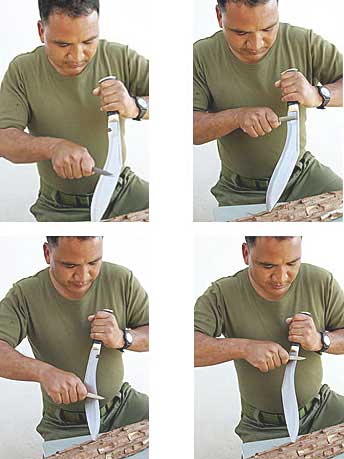 Most traditional kukri knives come with two small knives at the back of the scabbard to make the set complete. The small knife with sharp edge is called "kadra" or an extra knife meant as pen or paper knife for small cutting activities. Another knife accompanying kardra is the "chakmak" or the sharpener.
Most traditional kukri knives come with two small knives at the back of the scabbard to make the set complete. The small knife with sharp edge is called "kadra" or an extra knife meant as pen or paper knife for small cutting activities. Another knife accompanying kardra is the "chakmak" or the sharpener.
How to Sharpen a kukri by Chakmak? >> See the video
The common way of sharpening a kukri is done by using the chakmak against the edge of the blade to and fro (SEE PHOTO). However a sharpening stone always works better and faster. Traditionally, chakmak is also used to ignite fire by generating sparks by striking against selective stones found in river beds. Khukuri Knives issued to the Gurkhas during world wars did not have the two small knives however standard issue khukuris at present have both "Karda and Chakmak". Most khukuris from the old days had the two knives along with an extra pocket (Khalti) to store small survival kits.
How to sharpen by a file?
Caution should be taken while sharpening a kukri blade
An industrial file is useful to sharpen since it has higher HRC than the khukuri's edge. Hold the kukri firmly against a fix object facing the edge towards you and slightly up (angular). Take a file (fine or medium grit) and hold in an angular position (45-60*) to the edge. File in a to and fro movement from the notch towards the tip for several times. Flip the blade over and repeat the same on the other side until the edge gets sharpened. Forcefully filing against the blade in a steep angle will sharpen the edge faster. However over doing it may ruin the blade and its temper. Once sharpened use the Chakmak to strop the edge the same way but gently.
LONG TERM STORAGE: the Plastic method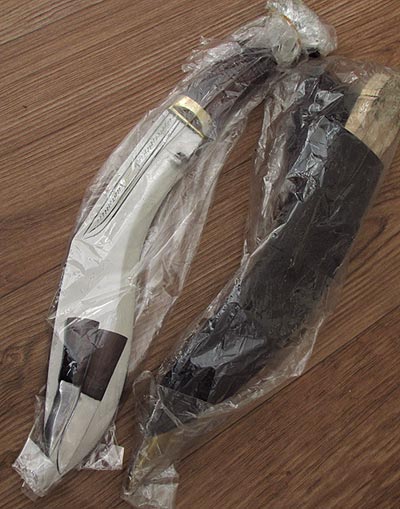
When you are going to store your kukri knife for a long time, say 3 months or more, then this is the best way to preserve your knife. Like any product/material when you put your khukuri out of action for a long time then it has to be properly stored/managed. When you are not able to give it a frequent maintenance then please follow these steps >>
- Heavily oil (any standard gun or engine oil) the blade, small knives (if any) and any other metallic surface
- Oil the handle with any mineral oil (linseed works the best)
- Insert the blade in a plastic bag, remove any air vacuum as much as possible and seal its opening. You may also use any plastic strip and wrap the blade all over by it
- Polish the leather sheath by shoe polish or any leather oil. In the throat forcefully tuck a wooden piece that is bigger in size than the throat (to avoid shrinking of sheath in the long storage). Insert in a plastic bag and seal its mouth
- Store it in a normal room temperature away from water, moist and heat (sunlight)
- SEE PHOTO properly
The TIP:
The tip of a khukuri is pointed and sharp but thin at the same time. It can be used for stabbing but this isn’t risk free. Since there is very little mass it might bend or break. Therefore care should be taken when handling/using the tip. After stabbing into any hard object, take out the knife gently by moving the knife up and down with alignment with the panel/body of the blade and NOT left or right. The tip will not be able to handle the pressure if done the opposite way and hence can bend or break. This is why makers slightly soften the tip to avoid breakage but to support bend as this can be mended easily later on. This is a very common practice in Khukuri Making.
Bent Tip
Some kukris’ sheath are freshly made. In order to protect it from rusting the blade is packed separately (not tucked in) and shipped. In a case like this it may pierce a hole in package, get exposed and bent in transport. If such happens then follow the following steps to correct it.
Take a smooth-coarse file depending on the bend's condition (more bent more coarse). Hold the kukri in an angular position facing its edge towards the body. Position the file parallel to the floor and start filling/scrubbing to and fro from beyond the area of bent and gently towards it (following the curve) with some reasonable force. Use more force if required at the stiff bent section. Slightly move the kukri’s angle up and down as you are filling. Make sure to cover a distance of 1-1.5 inches up and down from the actual bent part when filling.
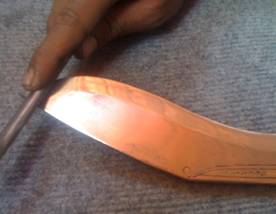
Flip the knife to the other side (opposite towards the body). Follow the same steps as above until the bent is fixed.
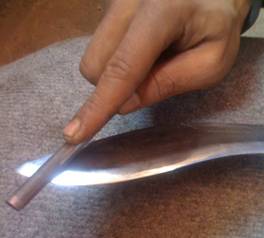
How to treat a gap in the handle?
How to cure cracks in the handle?
Easy way to fill in gap/crack...
Here are photographic steps >>
How to assemble the Wooden Stands?
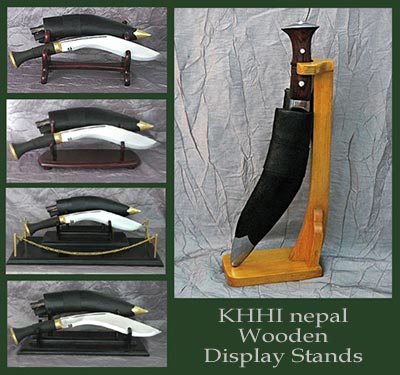 All Khukuri stands are foldable and come dismantled in flat packaging, for keeping them safe/unbroken during shipping. These stands can be assembled easily.
All Khukuri stands are foldable and come dismantled in flat packaging, for keeping them safe/unbroken during shipping. These stands can be assembled easily.
The blade and sheath holders (hands) can come off from its base and be put back at will. There are numbers written in the base of each hand of stand which can be pushed back to its respective numbers in each hole
Some have the screw system where as some have push-back. Each hand/holder has it's respecitve number as per its hole so its easy and fast to fix.
You can use any kind of vegetable oil or wood polish to protect the wood damage from dust and insects and increase its durability.
:: TROUBLE SHOOTER (problem/issue >> correction/solution) ::
| Problem / Issue | Solution /Quick-fix/ reason |
|
Blade and Handle have small/minute marks/lines on its surface.
|
Since we use natural raw materials it may sometimes occur. Do Nothing. It's very OK. |
| The tip of the blade is bent/twisted slightly when struck hard. | This is normal and done intentionally, the tip is less hardened (tempered) to facilitate the making process (to avoid chipping off when fixing butt cap in a straight down position) hence it could bend or twist; This can be fixed easily, see “Bent Tip”(above) |
| A kukri edge might chip if hit in very hard objects like stone, nail or very dry wood. This happens due to hardness and edge angle. |
Use a rough file in steep angular motion in the chipped area to eliminate the chips and to bring the edge in one level. Do both sides simultaneously so both sides of edge get well balanced. Do it till needed (until chipped and good edge do not come to one level/line). For big chip off contact local blacksmith. |
| A kukri edge can bent (roll) if accidentally stroke on very hard surfaces. This is actually good sign as this mean the temper is well balanced (not too hard). This is fixable. | Hold the kukri firmly against a fix object facing the edge towards you and slightly up (angular). Take a flat rough file and file the bent portion until it levels to the original level of the edge. Filing is recommended in a to and fro movement and from before the area of bent and beyond it. Repeat it on the other side as well. By doing this the twisted steel will come off and the new tempered steel will expose. |
| Sometime the scales of handle can shrink a bit due to the natural surroundings and tang may expose (in full flat tang version). This is natural and fixable. | Take a rough flat file and file (use some force if necessary) the exposed tang until it comes to the level of the shrunken scale. Once leveled, use a smooth emery cloth (sandpaper) to scrub both the tang and wood to further level closely and get the finishing. |
| Sometime the butt cap of handle may come loose after regular and hard use. This is fixable. | Completely take out the butt cap if possible then glue the handle's butt and put back the cap. Carefully but forcefully hammer the tang's tail in a circular movement so the tail is flattened in all sides and locks the butt. Incase the butt cap is not possible to take out then twist it as far as possible then follow the above steps. |
| When two ends of material are shouldered together it may overflow | Do nothing. Relax. It is actually better as this means the fixing is well done (secure) |
| Rivet's and lanyard hole's sleeve (brass outline), Bolster, Butt Cap, etc is not aligned perfectly | Do nothing. It's OK. |
|
The inner wooden frame of the sheath while fitting may leave a narrow gap which is later covered by leather. Thus in carefree handling the sharp blade may cut open the leather and get exposed. |
This happens. Carefully glue together the open-cut using some dust (iron dust recommended). Then seal the cut area with a thick leather patch and use duct tape around the sheath to fix it. |
| In most cases, the leather sheath tends to shrink a bit and may cause difficulty in drawing in and out - The frog may also come loose because of this. | This is natural. See Too “Tight or Too Loose” - Slightly lower the frog from its position then put glue all over in its original position in the sheath and pull back the frog. Let is dry. OR completely take out the frog, stick two pieces of leather patches to the inner rounded walls of the frog and let it dry. Put back the frog to its original position (forcefully if needed) |
|
|
|
If your are new to Kukri then start with our handling guide.. Know how to use or carry the right way (use the knife right way all the way!)
